How Cross River Therapy Uses Video Modeling for Teaching Social Skills in Autism
Discovering Innovative Approaches in Autism Therapy
Understanding Video Modeling in Autism Therapy
As Cross River Therapy strives to enhance the quality of life for individuals with autism, video modeling has emerged as a key method in their therapeutic regimen. This technique, grounded in social learning theory, facilitates the teaching of social skills by allowing individuals to observe and mimic behaviors demonstrated through videos. With a myriad of applications ranging from enhancing communication to fostering friendships, video modeling stands as a versatile tool in autism therapy. This article explores how Cross River Therapy utilizes this evidence-based practice, its effectiveness, and its impact on learning outcomes for individuals with autism.
The Basics of Video Modeling
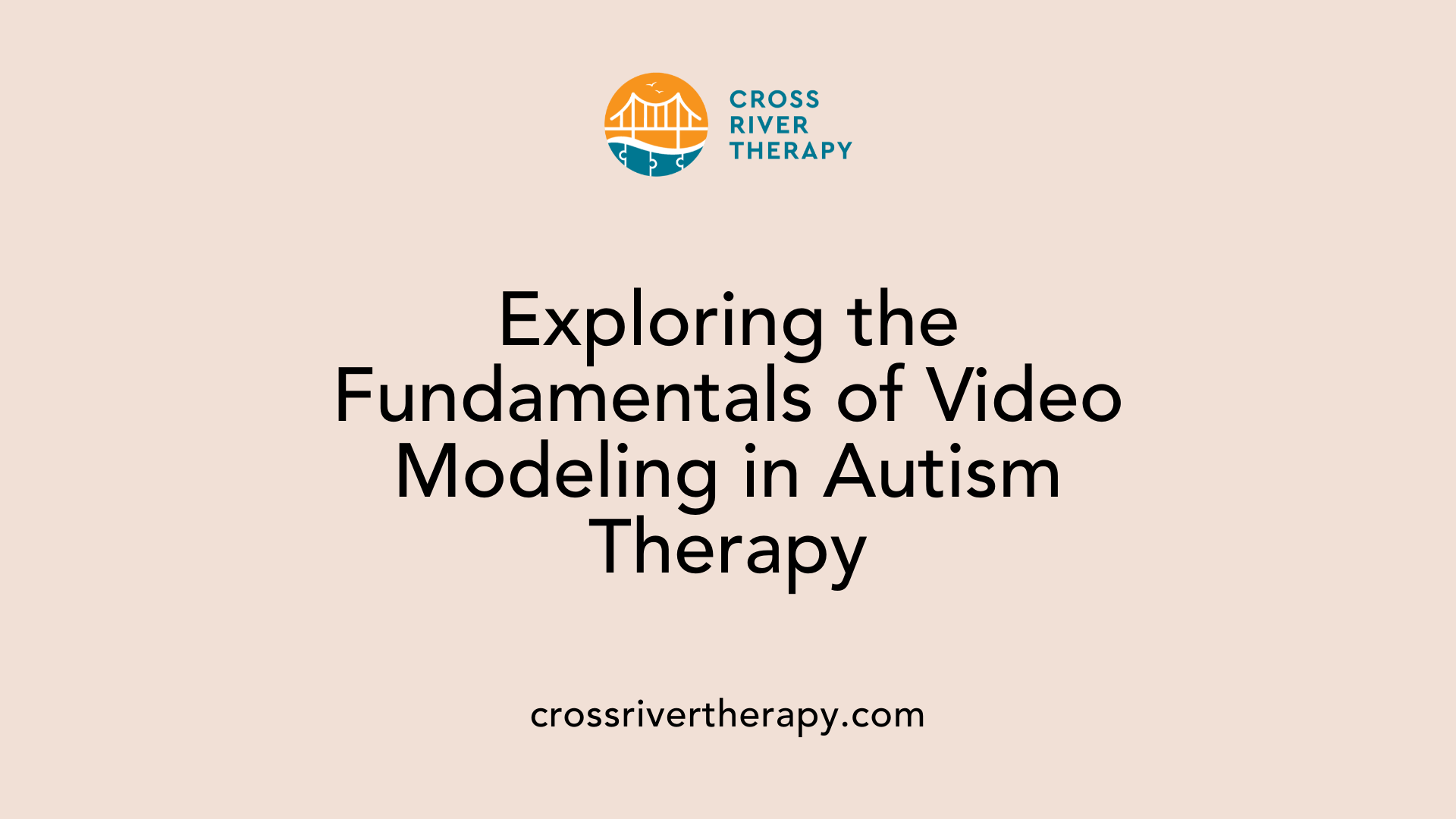
Explanation of video modeling
Video modeling is a behavioral therapy approach that aims to enhance learning in autistic children and teenagers by allowing them to observe and imitate modeled actions. This method is rooted in Albert Bandura's social learning theory, which posits that much of learning occurs through observation. By viewing videos that demonstrate specific skills or behaviors, children can cultivate those skills more effectively.
Research has demonstrated that video modeling is effective for teaching a wide array of skills, including communication, social interactions, play, and daily living tasks. Its versatility lies in the various formats in which it can be delivered, catering to different learning styles and needs.
Types of video modeling
There are four main types of video modeling utilized in autism therapy:
| Type of Modeling | Description | Use Case |
|---|---|---|
| Basic Video Modeling | Involves adults, peers, or animations demonstrating a skill. | Teaching social skills, like initiating conversations or play. |
| Video Self-Modeling | The child observes themselves performing the skill. | Encouraging confidence in social interactions and daily tasks. |
| Point-of-View Modeling | Presents the skill from the child's perspective. | Helps children understand application in their own context. |
| Video Prompting | Breaks skills into smaller, manageable steps. | Facilitates learning tasks by guiding step-by-step through processes. |
Each approach offers unique benefits, allowing for tailored interventions based on the child's individual needs. Video modeling can significantly improve communication, social interactions, and daily living skills amongst autistic individuals, fostering greater independence and social competence.
Effectiveness of video modeling
In recent studies, including those involving parental involvement in the intervention process, video modeling has shown to yield results comparable to those achieved by professionals. This highlights not only the approach's effectiveness but also the importance of collaborative efforts in therapeutic practices. Overall, the adaptability and accessibility of video modeling make it a valuable tool in the education and development of children with autism.
Techniques in Autism Therapy
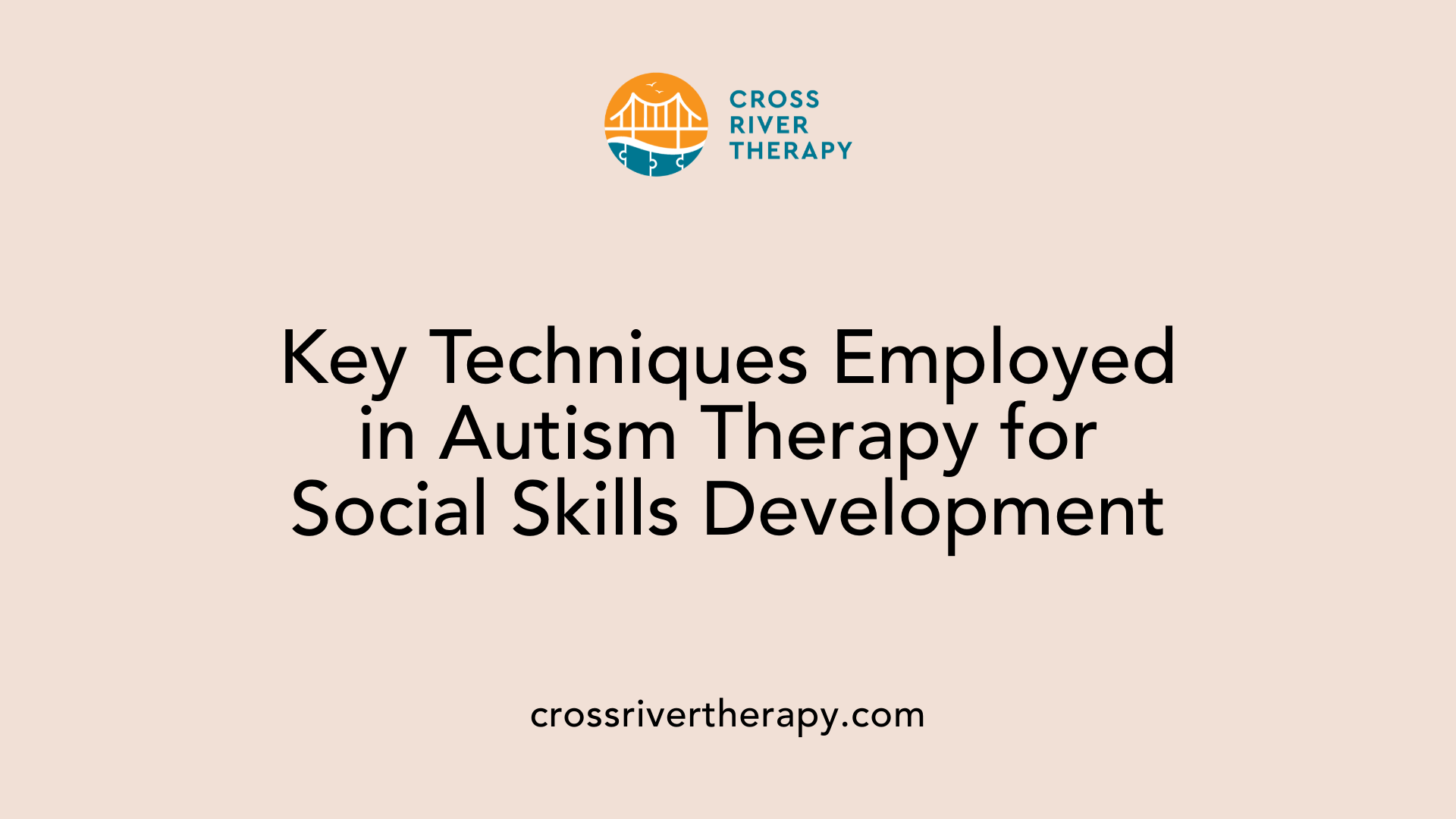
What techniques are used in autism therapy to teach social skills?
Various techniques are employed in autism therapy to teach social skills, focusing on enhancing pro-social behavior and communication. Some of the primary strategies include:
Self-Video Modeling (SVM): This method involves children watching videos of themselves successfully engaging in social interactions, which reinforces their ability to replicate these behaviors. Research indicates that SVM can lead to faster and more accurate execution of social tasks, particularly in activities like starting and maintaining enjoyable interactions with peers.
Peer Video Modeling (PVM): In contrast to SVM, PVM involves children observing peers modeling social behaviors. While effective, studies have shown that children receiving SVM demonstrated superior skill acquisition, often completing tasks more efficiently than those in the PVM group.
Parent Involvement: Training mothers to implement video modeling has been shown to yield significant benefits. Mothers effectively used this method to teach play skills, maintaining high treatment integrity and enabling their children to generalize these skills beyond structured settings.
Augmented Reality (AR) and Virtual Reality (VR): Recent studies indicate a promising shift towards technology-assisted interventions. AR and VR have shown effectiveness in teaching various social skills, including emotional recognition and relationship building. A comprehensive review revealed that 63% of studies reported positive outcomes using these technologies.
Key Components of Social Skills Development
To maximize the effectiveness of these techniques, it is crucial to:
- Break down complex social skills into manageable components.
- Use structured activities to create conducive learning environments.
- Pair children with strong social models to enhance interaction opportunities.
Additionally, incorporating parental and educator involvement is essential. These collaborative efforts not only support the intervention process but also emphasize the importance of teaching empathy, nonverbal cues, and communication skills for deeper social connections.
By focusing on strengths, individualization of strategies, and breaking down social behaviors, therapy can become a more personalized experience that fosters engagement and reduces anxiety in children with autism.
Benefits of Video Modeling for Autism
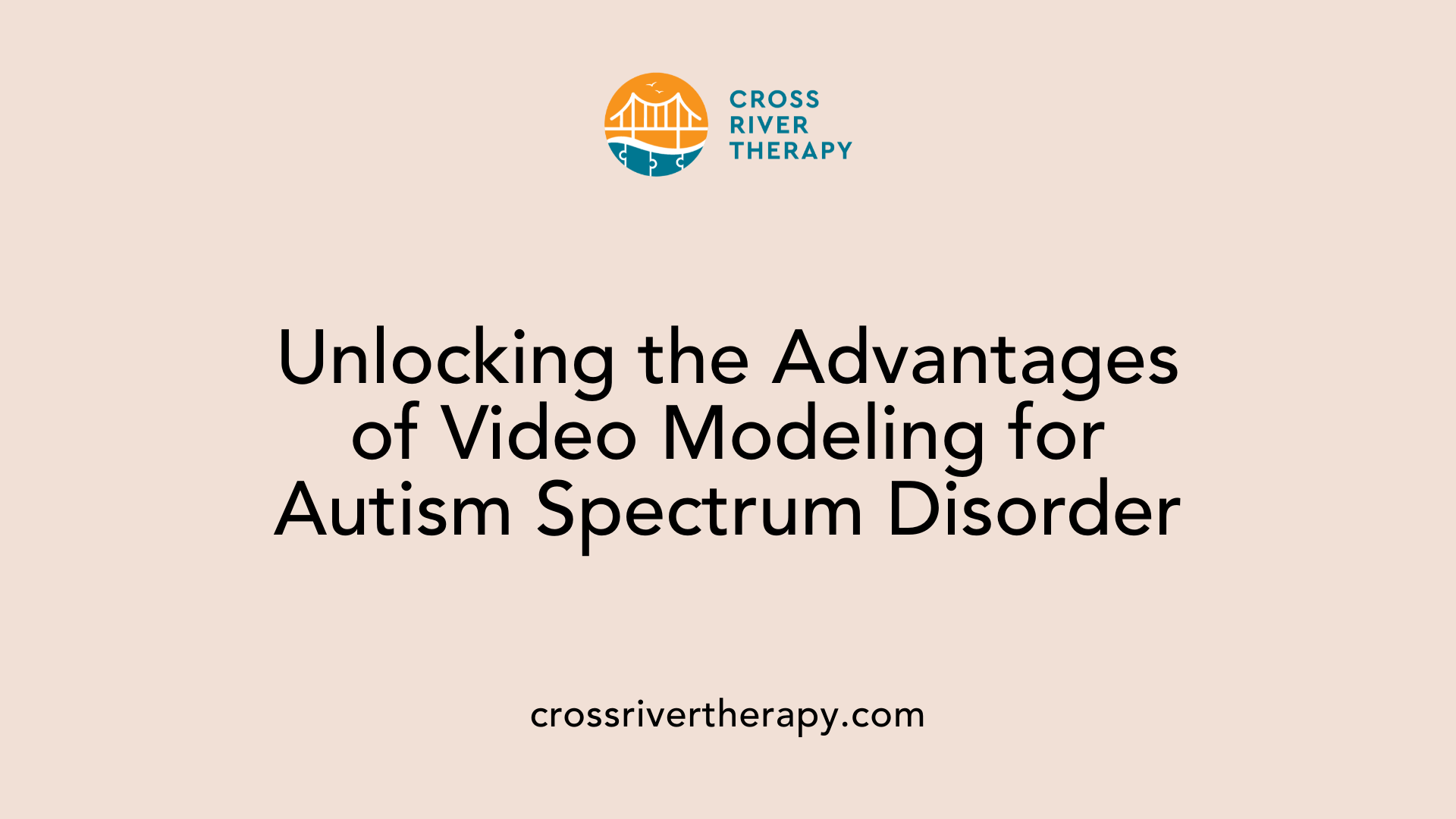
Advantages of Video Modeling
Video modeling has emerged as a cornerstone technique for teaching critical skills to children with Autism Spectrum Disorder (ASD). This approach offers numerous advantages, particularly for high-functioning individuals. By utilizing visual demonstrations, video modeling reduces the inherent pressure of face-to-face social interactions, allowing children to learn in a more controlled environment.
- Reduced Anxiety: Learning through videos helps mitigate anxiety often associated with direct social engagement. Children can observe behaviors at their own pace, fostering a sense of comfort.
- Structured Learning: Video modeling delivers structured scenarios that illustrate appropriate social responses. This clear framework assists children in understanding expectations and desired behaviors in various social contexts.
- Effective Processing: Visual information can be processed more efficiently than verbal instructions alone. By watching relatable peers demonstrate interactions, children with autism can better grasp the nuances of social communication.
- Versatility: This technique can be adapted to teach a wide range of skills, from basic life skills like washing hands to more complex social interactions such as initiating conversations.
Impact on Social Skills
Research indicates that video modeling has a profound impact on social skills acquisition among children with ASD. The findings show that interventions like self-video modeling (SVM) demonstrate quicker skill acquisition compared to other methods. The ability to engage in structured play scenarios not only helps in learning specific scripted behaviors but also encourages children to develop spontaneity in interactions.
- Task Performance: Children using video modeling showed faster and more effective execution of tasks such as starting conversations or engaging in playful activities with peers. For instance, children learned how to interact with sales personnel or maintain a conversation through guided scenarios.
- Generalization of Skills: One significant advantage of video modeling is the ability of children to generalize acquired skills to natural settings outside of controlled environments. Following interventions, many children were able to transfer knowledge from teaching sessions into real-world applications, confirming the approach’s effectiveness.
- Enhancing Interaction: The use of video modeling not only led to scripted verbalizations but also sparked unscripted interactions, boosting the overall quality of social exchanges. This dynamic is crucial as it enriches relationships between children with ASD and their typically developing peers.
In summary, video modeling stands out as an effective and versatile method for enhancing the social skills of children with autism. The combination of structured learning, anxiety reduction, and facilitation of real-life application significantly fosters social competence among individuals with ASD.
Social Skills Training (SST) in Autism
What is Social Skills Training (SST) for autism?
Social Skills Training (SST) for autism is a structured therapeutic approach designed to enhance communication and social interaction skills among individuals on the autism spectrum. The process typically begins with a comprehensive assessment to identify the individual's specific strengths and challenges. This ensures that the treatment plan is customized to address the unique needs of each participant.
Utilizing evidence-based practices, particularly from Applied Behavior Analysis (ABA), SST breaks down complex social skills into smaller, manageable components. Techniques like positive reinforcement, prompting, and modeling are employed to teach skills effectively. Targeted goals include crucial competencies such as greeting others, initiating conversations, and engaging in reciprocal play.
Specific Techniques Included in SST:
- Modeling: Demonstrating behaviors for children to observe and imitate.
- Role-Playing: Practicing social scenarios in a controlled environment.
- Feedback: Providing constructive criticism and reinforcement to encourage progress.
The effectiveness of SST is further enhanced when it involves collaboration with parents and educators, thereby promoting a supportive environment both at home and school. Notably, research shows that structured interventions, such as video modeling, lead to robust skill acquisition, allowing children to generalize learned behaviors across different settings.
Role in Autism Therapy
SST plays a crucial role in autism therapy by addressing vital areas needed for successful social interactions. For example, studies have demonstrated that methods like self-video modeling (SVM) significantly improve proficiency in initiating and maintaining enjoyable activities, outperforming alternatives like peer video modeling (PVM).
The impact of SST is prominently observed through the following outcomes:
- Increased Cooperative Play: Training interventions show a marked rise in the frequency of cooperative play among children with autism and their typically developing peers.
- Enhanced Social Interactions: Video modeling techniques have been linked to greater spontaneous verbal interactions, fostering authentic engagement.
- Generalization of Skills: Children who receive SVM often maintain learned skills and apply them in non-teaching circumstances, confirming the long-term benefits of the training.
As technology advances, incorporating tools like augmented and virtual reality into SST is becoming more popular, evidencing a shift to innovative methods that support social skills learning in an immersive environment. Overall, SST not only aids in developing essential social skills but also significantly enhances the quality of life for individuals with ASD.
Cross River Therapy’s Approach
Video Modeling in Therapy
Video modeling has emerged as a highly effective evidence-based practice for enhancing social skills in children with Autism Spectrum Disorder-high-functioning (ASD-HF). By utilizing recorded visual narratives, this technique allows children to observe and replicate desirable behaviors in a structured and supportive manner. In various studies, video modeling has been shown to not only teach specific skills but also improve engagement and social interactions among children with autism.
Both self-video modeling (SVM) and peer video modeling (PVM) have been explored in recent research, revealing interesting outcomes. SVM tends to result in faster skill acquisition, particularly in tasks like initiating and maintaining enjoyable activities with peers. Conversely, PVM also proves beneficial, particularly when focused on interaction scenarios, but might require more time for children to master the skills compared to SVM.
The importance of training caregivers, particularly mothers in implementing video modeling, cannot be overstated. Mothers involved in studies have been found to successfully prepare recordings and apply the video modeling effectively to teach various skills, reinforcing the child's learning process.
Specific Application at Cross River Therapy
At Cross River Therapy, video modeling techniques are seamlessly integrated into their therapy programs. One specific application involves teaching children how to engage in reciprocal pretend play with their typically developing peers. By pairing children with autism with peers and utilizing videotaped models of play scenarios, the therapy fosters essential social skills, enhancing interaction quality and quantity.
Through consistent use of video modeling, participants have demonstrated substantial improvements in acquiring both scripted and spontaneous verbalizations during play. For instance, children involved in play sessions noted notable increases in cooperative instances and reciprocal interactions. Not only were these skills quickly acquired, but they also showed longevity during subsequent follow-up sessions, indicating successful learning and application well beyond the initial teaching.
Here's a brief look at the outcomes from such interventions in a summarized table:
| Aspect | Impact of Video Modeling |
|---|---|
| Skill Acquisition | Faster acquisition of social skills |
| Maintenance | Skills retained over time |
| Interaction with Peers | Increase in cooperative play and verbal interactions |
| Parental Involvement | High treatment integrity in implementation |
| Generalization of Skills | Skills applied in non-teaching conditions |
Incorporating video modeling into therapy not only respects the individual learning styles of children with ASD but also emphasizes the importance of structured practice settings. This evidence-based approach enhances overall social skill development, making it a win-win for children, parents, and therapists alike.
Self-Video Modeling vs. Peer Video Modeling
Comparative Effectiveness
A recent study explored the effectiveness of two distinct video modeling strategies aimed at improving social skills in children diagnosed with high-functioning Autism Spectrum Disorder (ASD-HF). The strategies compared were Self-Video Modeling (SVM) and Peer Video Modeling (PVM).
In this study, 60 participants diagnosed with ASD level 1 were randomly assigned to one of the two groups. The results revealed that children receiving SVM demonstrated faster and more accurate execution of social tasks, particularly when it came to interactions like starting and maintaining enjoyable activities with peers. This suggests that SVM is a more effective approach than PVM for teaching social skills in these individuals.
Study Insights
The tasks assessed in the study included crucial social interactions such as:
(a) interacting with a salesperson while making a purchase
(b) initiating and keeping a conversation going with peers
(c) starting and maintaining an enjoyable activity with a peer
Children in the SVM group exhibited significantly lower acquisition times for these tasks compared to those who received PVM. This highlights the advantages of SVM in promoting skill acquisition in social scenarios for children with ASD-HF.
Moreover, video modeling as an evidence-based practice proved effective not only in enhancing social skills but also in improving self-help and academic capabilities. The implementation of video modeling by mothers to teach children a specific play skill showed high treatment integrity, implying that parental engagement can significantly enhance learning outcomes.
Overall, the findings emphasize the potential of technology-assisted interventions like SVM in facilitating faster and more effective social skill development for children with Autism Spectrum Disorder.
| Strategy | Effectiveness | Notable Skills Acquired |
|---|---|---|
| SVM | Faster and correct execution | Interaction initiation, conversation maintenance |
| PVM | Slower than SVM | Social task execution |
These insights reflect a growing recognition of the benefits of tailored video modeling approaches in educational settings for children with Autism.
Implementing Video Modeling
Role of Parents and Professionals
The collaborative involvement of parents and professionals is crucial in implementing video modeling interventions for children with Autism Spectrum Disorder-high functioning (ASD-HF). Research shows that mothers can effectively utilize video modeling techniques to teach specific skills. In one study, mothers successfully employed video modeling to help their children build a model train using Lego bricks, achieving high treatment integrity.
This collaborative approach not only empowers parents to engage in their child’s learning but also bridges the gap between home and therapeutic environments. By training parents to prepare video recordings that demonstrate desired social behaviors and skills, the results can reflect those typically achieved by professionals. Involving educators further enriches the process, enabling a more consistent application of learned skills in various settings.
Video Modeling Execution
Video modeling consists of showing children videos in which peers or adults demonstrate specific social skills. In practical applications, certain tasks are often targeted, such as:
- Interacting with a salesperson during purchases
- Initiating and maintaining conversations with peers
- Engaging in enjoyable activities with friends
Children who received self-video modeling (SVM) showed faster acquisition of these tasks, indicating a preference for this method over peer video modeling (PVM). The children in the SVM group not only learned quicker but also maintained their skills, demonstrating effective generalization in non-teaching conditions.
The use of technology further enhances these methods. Studies incorporating Augmented Reality (AR) and Virtual Reality (VR) revealed that 63% of interventions were effective in teaching social skills. VR, in particular, offers children a safe environment to practice these skills without real-world pressures.
To implement video modeling, practitioners can start by:
- Identifying target social skills to be taught.
- Creating video content that clearly demonstrates these skills through relatable scenarios.
- Training parents and caregivers to reinforce the modeling at home.
In conclusion, this blend of video modeling, parent involvement, and technological tools offers a robust strategy for enhancing social capabilities in children with autism.
Outcome Assessment of Video Modeling
Skill Acquisition and Generalization
Video modeling has shown to be a powerful intervention for children with Autism Spectrum Disorder, particularly in acquiring social skills. In a study with 60 participants diagnosed with ASD level 1, children who underwent self-video modeling (SVM) exhibited faster and more accurate execution of social tasks compared to those who experienced peer video modeling (PVM). This was particularly evident in tasks involving interaction with peers, such as starting and maintaining enjoyable activities.
Specific tasks evaluated included:
- Interacting with a salesperson during a purchase
- Initiating and maintaining conversations with peers
- Engaging in enjoyable activities with peers
The results indicated that children in the SVM group had significantly lower acquisition times, showcasing SVM's effectiveness as a teaching method for enhancing social skills. All participants were also able to generalize the skills learned to non-teaching conditions, which is critical for real-world application.
Long-term Effectiveness
The durability of skills acquired through video modeling is another promising factor. The study found that children maintained their learned behaviors over time and were able to apply these skills autonomously in various settings, suggesting long-term effectiveness. Moreover, the collaborative aspect of video modeling—where mothers were trained to create and implement video interventions—showed high treatment integrity, potentially optimizing outcomes further.
The use of video models not only promoted scripted actions but also fostered spontaneous interactions, which are crucial for developing complex social skills. The increased instances of cooperative play and reciprocal verbal exchanges between children with autism and their typically developing peers indicate a notable enhancement of social engagement, reinforcing the value and impact of video modeling in therapeutic practices targeting social skills.
Collaboration in Video Modeling
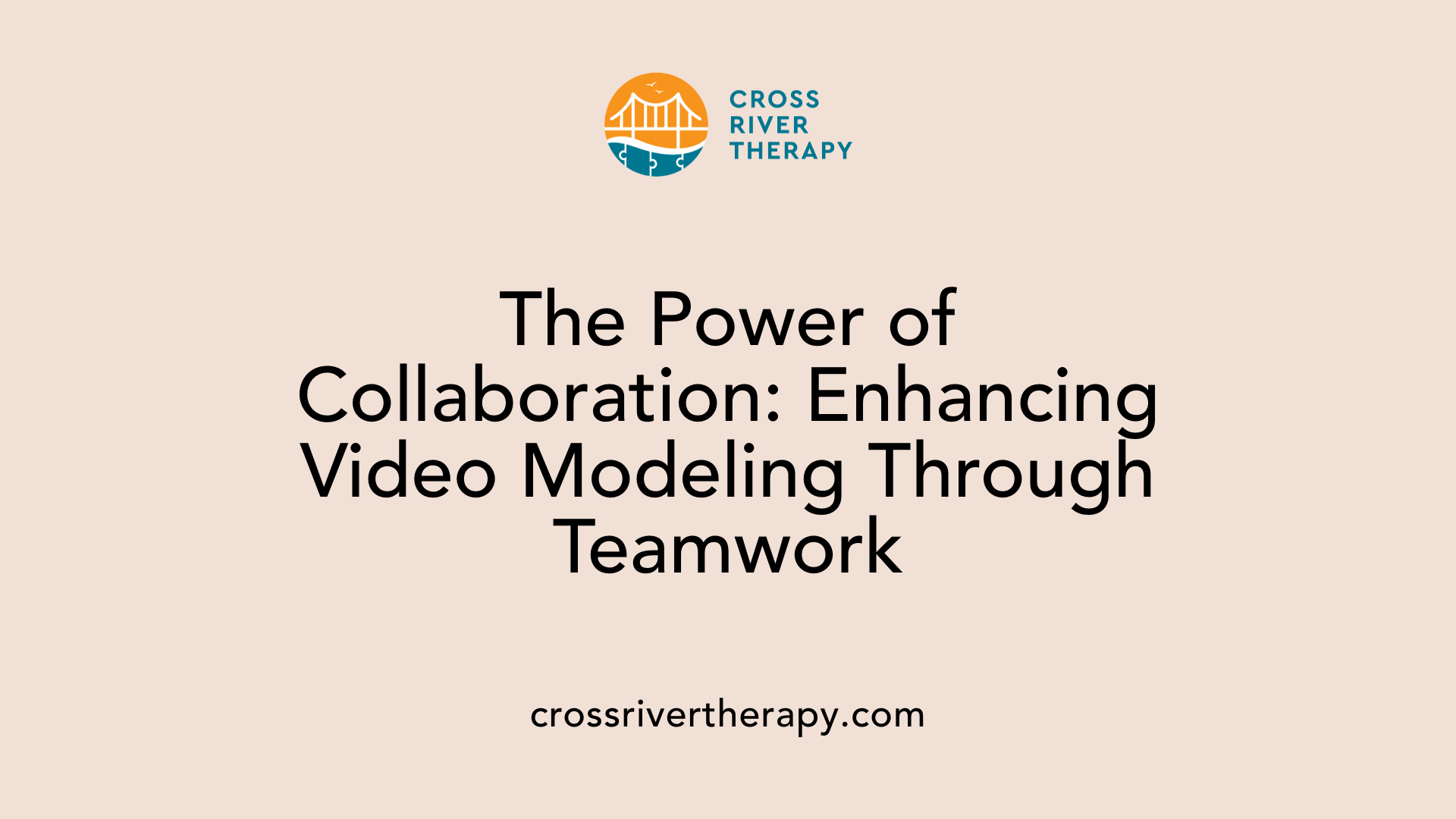
Parental Involvement
Parental involvement is crucial in the video modeling intervention for children with Autism Spectrum Disorder, particularly high-functioning autism (ASD-HF). The study demonstrated that mothers who participated in the training could implement video modeling effectively, showcasing high treatment integrity. This hands-on role allowed parents to craft tailored video recordings that catered to their child's specific needs, enhancing the learning experience.
Furthermore, the children were able to generalize the skills learned from these modeling sessions to non-teaching environments, indicating the significant impact of active parental engagement. This involvement not only helps in reinforcing learned behaviors at home but also fosters a supportive environment where children can practice social skills.
Educator’s Role
The role of educators in video modeling interventions is equally pivotal. Educators can facilitate structured environments where video modeling techniques are consistently applied. Training educators to incorporate these video modeling methods enhances the overall effectiveness of the intervention. When educators and parents collaborate, it creates a cohesive support system that is crucial for effective skill acquisition among children with autism.
Involving educators in the process enables a systemized approach to teachings, such as initiating conversations or engaging in cooperative play. As recorded in various studies, children with ASD-HF who receive support from both their parents and teachers show improved outcomes in social skills, such as cooperation, emotional recognition, and social awareness.
Impact of Collaboration
The combination of parental involvement and educator support leads to a more enriched therapeutic process. This collaboration not only enhances the efficacy of interventions like video modeling but also ensures that the children develop critical social skills in various contexts, maximizing the benefits of their learning experiences.
| Aspect | Parental Involvement | Educator’s Role |
|---|---|---|
| Training Implementation | High treatment integrity in models | Structured application of techniques |
| Support Environment | Reinforcement at home | Systematic teaching in educational settings |
| Skill Generalization | Skills apply to non-teaching scenarios | Supports social skills in curricular activities |
In summary, fostering cooperation among parents and educators ultimately creates a more effective learning environment for children with autism.
Utilizing Technology in Autism Therapy
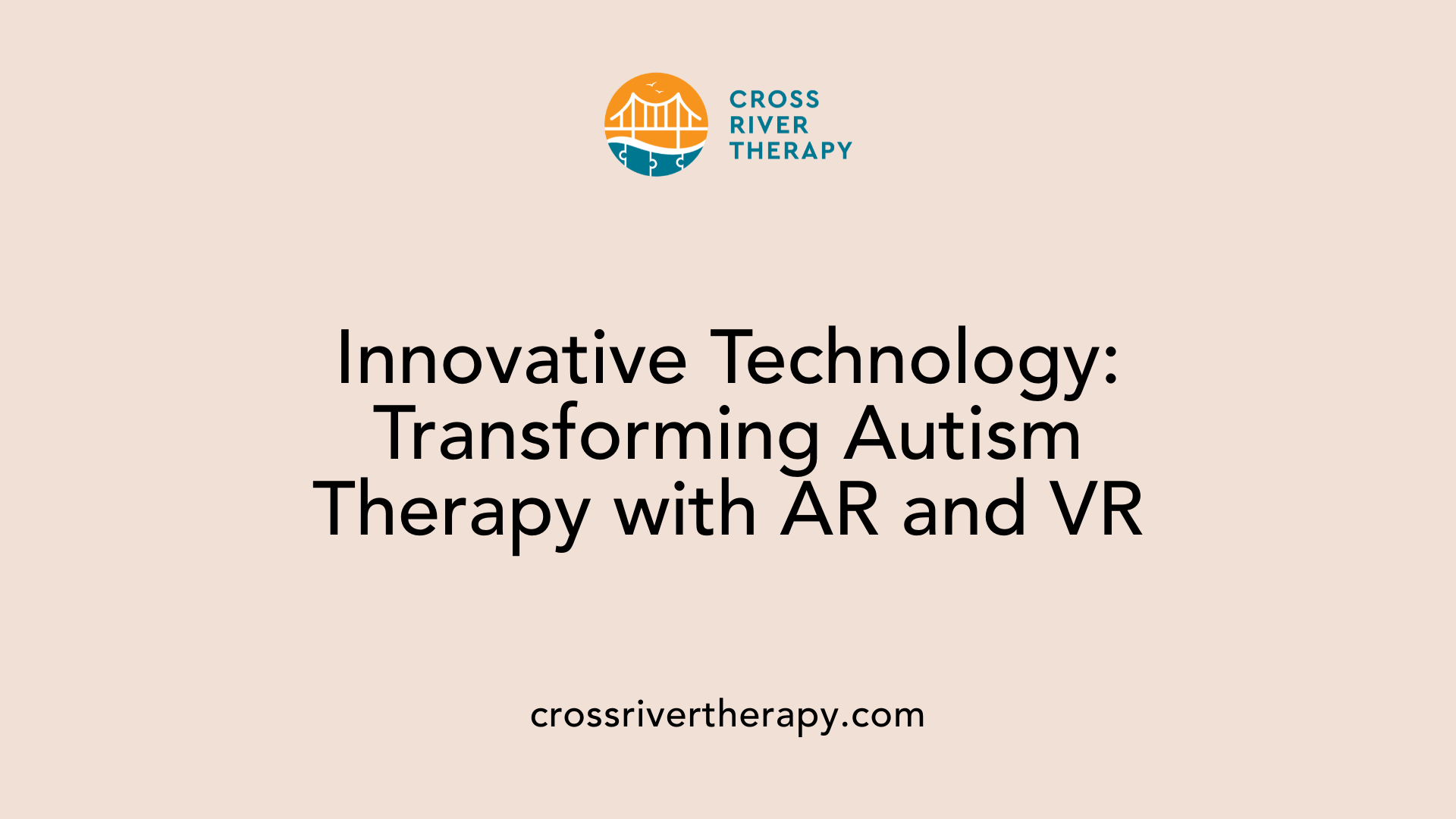
AR and VR applications
Augmented Reality (AR) and Virtual Reality (VR) are emerging as innovative tools in the realm of autism therapy, particularly for teaching social skills. A review of 41 studies found that 63% demonstrated these technology-assisted interventions positively impacted learning outcomes for individuals with autism. These applications allow for immersive experiences that can replicate various social situations, making skill acquisition not only more engaging but also more effective.
The studies highlighted targeted social skills essential for autistic individuals, such as emotion recognition, relationship building, and cooperation. This focus on critical developmental areas is paramount, as improving these skills can significantly enhance social interactions and overall quality of life.
Shift towards tech-assisted interventions
The trend towards integrating technology in autism therapy reflects a growing recognition of its advantages. AR can assist in generalizing learned behaviors by overlaying interactive components onto real-life environments, while VR provides a safe space for children to practice social skills without the pressure of real-world interactions. This combination creates a dynamic learning environment that caters to the unique needs of autistic individuals.
Moreover, the studies indicate that including parental and educator involvement in these technological interventions can optimize outcomes. Collaborative approaches enhance the effectiveness of therapy, as caregivers can reinforce skills learned during sessions, ensuring that the benefits extend beyond structured environments.
By incorporating AR and VR into therapeutic practices, the field of autism therapy is witnessing a transformation that not only embraces technology but also aims for holistic development in social skills among children with autism.
Video Modeling in Daily Practice
Daily Living Skills Acquisition
Video modeling emerges as a powerful tool for teaching daily living skills to children with Autism Spectrum Disorder (ASD). In practical settings, parents can utilize video modeling strategies to enhance their children's ability to perform essential tasks independently. By recording everyday activities—like cooking, shopping, or hygiene routines—parents can create models that illustrate each step clearly.
During a study focusing on mothers implementing video modeling for their children, it was found that participants could master a play skill—in this case, building a model train using Lego bricks—effectively with high fidelity. This indicates that when everyday skills are modeled, children are more likely to grasp and replicate these actions.
Practical Applications
Beyond play skills, video modeling has shown effectiveness in teaching a range of daily living tasks. For instance:
- Interacting with Salespeople: Children learn to engage with adults in public settings.
- Conversational Skills: Initiating and maintaining discussions with peers is practiced through guided models.
- Cooperative Play: Children can learn the dynamics of play through examples that promote interaction.
The effectiveness of video modeling extends to fostering not only scripted verbalizations but also spontaneous interactions among peers. This holistic approach to skill acquisition supports both structure and flexibility, making video modeling an excellent strategy for parents and educators alike.
In Summary
By leveraging video technology, caregivers can facilitate significant learning opportunities that allow children with ASD to thrive in social and daily living contexts.
Future Directions in Autism Therapy
Innovations and Research
Recent studies have highlighted the growing effectiveness of leveraging technology in interventions for Autism Spectrum Disorder, particularly in enhancing social skills. Two prominent strategies—self-video modeling (SVM) and peer video modeling (PVM)—have shown significant improvements in children with high-functioning autism. Notably, SVM demonstrated faster skill acquisition, especially in interactive scenarios such as engaging with peers or salespersons. These findings affirm the efficacy of video modeling as a viable therapeutic practice.
Moreover, the incorporation of augmented reality (AR) and virtual reality (VR) in teaching social skills is gaining traction. A recent review of 41 studies revealed that 63% reported AR and VR interventions effectively fostered social skills development, including emotion recognition and relationship skills. This shift towards immersive technologies offers unique opportunities for children to practice social scenarios in controlled environments.
Evolving Strategies
Collaboration between parents, educators, and therapists is increasingly emphasized in intervention strategies. Engaging mothers in implementing video modeling techniques has produced outcomes comparable to professional-led sessions. This approach thus not only empowers families but also enhances the effectiveness of the learning process. Additionally, the transfer of learned skills to natural contexts post-intervention indicates the promising potential of these methods.
In summary, as research continues to validate various innovative strategies, there is a clear direction toward integrating personalized, technology-assisted, and collaborative interventions to better support children with autism in developing crucial social skills.
Integrating Video Modeling in ABA
ABA Therapy Techniques
Applied Behavior Analysis (ABA) is a widely recognized therapeutic approach focused on improving specific behaviors, including communication and social skills in individuals with Autism Spectrum Disorder (ASD). Among the myriad techniques within ABA, video modeling has emerged as a significant tool. This strategy involves demonstrating desired behaviors through video recordings, allowing children on the spectrum to observe and learn from visual examples.
Combined Methodologies
Recent studies have illustrated the effectiveness of video modeling, specifically self-video modeling (SVM) and peer video modeling (PVM), in enhancing social skills among children with high-functioning ASD. In trials with 60 participants, SVM proved to be more efficacious than PVM, with faster skill acquisition in tasks such as initiating activities with peers and maintaining conversations.
Moreover, integrating video modeling into ABA therapy can be enriched by involving parents and educators in the process. This collaborative approach not only boosts the fidelity of implementation but also fosters a supportive learning environment. In one notable study, mothers were trained to implement video modeling techniques to teach children a play skill, resulting in high treatment integrity and successful skill acquisition.
Effectiveness of Video Modeling
The ability to generalize the learned skills in non-teaching scenarios further solidifies the role of video modeling in ABA. By creating video scenarios featuring both typically developing peers and children with autism, these models helped increase cooperative play instances and spontaneous interactions, showcasing the positive impact video modeling holds in social skill development for children with autism.
The Impact on Social Interactions
Improving Peer Relationships
The use of video modeling techniques, such as Self-Video Modeling (SVM) and Peer Video Modeling (PVM), has shown a notable impact on the social interactions of children with Autism Spectrum Disorder-high-functioning (ASD-HF). In a study comparing both strategies, SVM emerged as the more effective method in teaching essential social skills to children diagnosed with ASD level 1.
Children in the SVM group exhibited a quicker and more accurate execution of social tasks, particularly in initiating and maintaining enjoyable activities with peers. This suggests that SVM not only enhances children's ability to engage with others but also fosters the development of peer relationships by encouraging shared enjoyment and interaction.
Social Engagement Outcomes
Further studies involving video modeling have also highlighted improvements in social engagement outcomes. By training mothers to use video modeling to teach play skills, such as building a model train with Lego bricks, children demonstrated a successful acquisition of skills that extended beyond structured teaching environments.
The results indicated that participating children maintained their newly acquired abilities, which they could apply in non-teaching conditions. Importantly, these children showcased an increase in cooperative play and reciprocal verbal interactions with typically developing peers. The incorporation of scripted verbalizations transitioned into spontaneous interactions, illustrating a significant enhancement in their overall social skills.
In summary, the advancements in using video modeling techniques serve not only to improve self-help and play skills but also to fortify social connections, paving the way for meaningful interactions between children with autism and their peers.
Research Evidence on Video Modeling
Study Findings
A recent study evaluated two strategies for improving social skills in children diagnosed with high-functioning Autism Spectrum Disorder (ASD-HF): self-video modeling (SVM) and peer video modeling (PVM). Involving 60 participants with ASD level 1, the research revealed that SVM outperformed PVM, particularly in tasks like initiating and maintaining enjoyable activities with peers. Children utilizing SVM completed social tasks faster and more accurately than those in the PVM group, underscoring SVM's effectiveness in teaching essential social skills.
Specific social tasks assessed included interactions with salespersons, maintaining conversations, and engaging in collaborative play. Results indicated that the SVM group had significantly lower acquisition times, highlighting its advantage in teaching skills needed for social engagement.
Empirical Support
In addition to the SVM and PVM strategies, video modeling overall has shown promise as an effective, evidence-based practice for teaching numerous skills to individuals on the autism spectrum. Notably, mothers implementing video modeling techniques successfully taught children a specific play skill—building a model train with Lego bricks—while maintaining high treatment integrity. Children not only learned the target skill but also managed to generalize it to non-teaching conditions, showcasing the effectiveness of these interventions.
Moreover, extensive reviews of studies on augmented reality (AR) and virtual reality (VR) demonstrate a significant positive impact on teaching social skills to students with autism. Across 41 studies, 63% reported these technology-based interventions as effective, particularly in enhancing abilities like emotion recognition and social awareness. Overall, video modeling proves to be a versatile tool in progressing social skill acquisition for children with autism, offering a compelling avenue for future practice.
Challenges and Considerations
Potential Barriers
When implementing video modeling techniques in therapy for children with Autism Spectrum Disorder (ASD), several potential barriers may arise. One significant challenge is ensuring that practitioners are adequately trained to deliver the interventions effectively. If not, the integration of techniques like self-video modeling (SVM) or peer video modeling (PVM) may be inconsistent or improperly executed, potentially reducing effectiveness.
Another barrier includes the variability in individual responses; not every child with ASD may respond similarly to video modeling. Some children might struggle with engagement due to their unique sensory profiles, which can affect their attention and focus on video content.
Considerations in Therapy
In therapeutic settings, it is also crucial to consider parental involvement. Studies indicated that when mothers were trained to implement video modeling, they achieved high treatment integrity, which is essential for successful outcomes. Engaging families helps create a supportive environment where learned skills can be practiced outside of clinical settings.
Additionally, safety and comfort during sessions should be prioritized, especially when using technology like augmented and virtual reality. These methods should be adapted to the child's needs while ensuring a supportive and secure atmosphere conducive to learning.
Overall, addressing these challenges and considerations can lead to more successful interventions for children with ASD, making video modeling a potentially powerful tool.
Enhancing Generalization of Skills
Extending Learned Skills
Generalization of skills learned through interventions is vital for children with Autism Spectrum Disorder (ASD). This process involves applying learned skills to varied situations outside of the training context. In the studies reviewed, video modeling has proven effective in teaching social skills, allowing children to interact and play with typically developing peers in natural settings. By participating in real-life scenarios, children can transfer their learned skills, such as initiating conversations and cooperative play, to different environments.
Strategies for Skill Maintenance
Some strategies to enhance the maintenance of acquired skills include:
- Parental Involvement: Engaging parents in the intervention process encourages consistent practice of skills at home, fostering an environment for reinforcement.
- Peer Interaction: Facilitating regular playdates or group activities with peers can help children practice social skills in a variety of contexts, solidifying their learning.
- Use of Technology: Integrating augmented reality (AR) or virtual reality (VR) can create engaging environments where children can practice social skills in simulations, enhancing retention and application in real-world scenarios.
Overall, these strategies pave the way for children with ASD to not only retain the skills learned but also to navigate social settings more effectively.
Video Modeling for Play Skills
Therapy applications
Video modeling has emerged as a highly effective therapy application for teaching essential skills to children with Autism Spectrum Disorder (ASD), particularly in enhancing their social abilities. In one study, mothers were trained to use video modeling to instruct their children on specific play skills, such as building a model train with Lego bricks. This approach yielded impressive results, with mothers able to implement the technique with high fidelity. Importantly, the skills acquired during the sessions were maintained over time and could be generalized to non-teaching conditions.
Play skill development
The application of video modeling extends beyond basic task instruction. It includes fostering reciprocal interactions in play scenarios. For instance, two children with autism engaged in pretend play alongside typically developing peers after being exposed to videotaped models demonstrating effective play scenarios. Following this intervention, both children displayed significant growth in cooperative play and spontaneous verbal exchanges. This suggests that video modeling not only supports scripted actions but also enhances unstructured social interactions, which are crucial for development. The blend of structured modeling and peer engagement encourages a richer, more dynamic learning experience, leading to improved social skill acquisition.
Role of Video Modeling in Emotion Recognition
Improving Emotional Awareness
Video modeling has shown promising results in improving emotional awareness among children with Autism Spectrum Disorder, particularly those on the high-functioning end. By viewing video demonstrations, children learn to recognize and interpret various emotional expressions. Research indicates that directing video modeling towards capabilities like emotion recognition significantly enhances the ability to identify emotions in social contexts.
Social Cognitive Skills
Incorporating video modeling also fosters crucial social cognitive skills. When children observe interactions in video format, they are guided in understanding social cues, thus enhancing their ability to respond appropriately in real-world situations. This approach not only empowers them to recognize feelings but also equips them with the knowledge to engage cooperatively and intelligently with peers.
As indicated by multiple studies, including those leveraging augmented reality (AR) and virtual reality (VR), children benefit greatly from interventions centered around parental involvement and structured video modeling. This methodology facilitates essential skill acquisition that can be generalized beyond training sessions, actively supporting children with ASD in navigating social environments more effectively.
The SVM Advantage
Benefits of self-video modeling
Self-video modeling (SVM) has demonstrated a significant advantage in teaching social skills to children with Autism Spectrum Disorder, particularly high-functioning ASD. The study highlighted that SVM not only aids in skill acquisition but also enhances a child's ability to understand and perform social interactions effectively. By using video recordings where children observe themselves successfully executing social tasks, they are provided with a powerful model that fosters self-recognition and confidence.
Efficiency in learning
The results showed that children using SVM exhibited faster and more accurate task execution in various social scenarios. Notably, the SVM group completed tasks such as initiating and maintaining an activity with peers more effectively than those in the peer video modeling (PVM) group. This suggests that SVM could be a more efficient method for children with ASD-HF, as they demonstrated significantly lower acquisition times across specific challenges, including:
| Task Description | SVM Group Acquisition Time | PVM Group Acquisition Time |
|---|---|---|
| Interacting with a salesperson | Shorter | Longer |
| Initiating peer conversation | Faster | Slower |
| Starting enjoyable activities | Quicker | Less effective |
These findings indicate that SVM not only improves the effectiveness of social skills training but also supports children in generalizing learned behaviors to real-world settings.
Incorporating Video Modeling in Educational Settings
Applications in Schools
Video modeling has been increasingly recognized as an effective teaching strategy for children with Autism Spectrum Disorder (ASD). In educational settings, it aims to enhance social skills through observational learning. Programs often utilize self-video modeling (SVM) or peer video modeling (PVM) to demonstrate social interactions and communication skills.
For instance, in studies where mothers implemented video recordings, children learned skills such as initiating conversations and maintaining play, like building model trains with Lego bricks. The speed of skill acquisition was significantly higher for those using SVM, showcasing its advantages in real-world tasks.
Collaborative Learning Environments
Incorporating video modeling not only facilitates individual learning but also promotes collaborative environments where peers engage in learning together. For example, children with ASD trained alongside typically developing peers showed notable improvements in socialization, leading to cooperative play and spontaneous interactions.
Moreover, involving parents and educators in the process enhances the effectiveness of these interventions. When stakeholders collaborate on video modeling projects, children benefit from a broader support network, fostering better retention and application of newly acquired skills.
Overall, video modeling presents a promising avenue for supporting children with ASD in academic and social learning contexts, driving successful skill acquisition.
Supporting Reciprocal Interactions
Peer Interaction Improvements
The use of video modeling as a teaching intervention has significantly enhanced peer interactions among children with Autism Spectrum Disorder, particularly high-functioning autism (ASD-HF). Studies have shown that children who participated in video modeling interventions experienced notable increases in cooperative play instances and reciprocal verbal interactions during play sessions. By observing video examples of engaging play, these children learned to initiate and maintain enjoyable activities with their peers more effectively than through traditional methods.
Role in Reciprocal Play
Video modeling has demonstrated its effectiveness not just in scripted play but also in fostering spontaneous, unscripted social interactions. Children with autism, when paired with typically developing peers, quickly acquired both scripted verbalizations and playful interactions. These interactions were not only maintained over time but also encouraged more naturalistic dialogue and engagement in play scenarios. This dynamic is crucial for supporting the development of social skills, as it breaks down barriers to interaction and promotes a more inclusive play environment that benefits all children involved.
In summary, video modeling serves as a powerful tool in enhancing reciprocal interactions in play settings, paving the way for stronger social connections and improved communication skills among children with autism.
Creating Effective Video Models
How to Make Engaging Video Models
Creating video models that effectively teach social skills to children with autism involves several key elements. First, ensure that the videos feature relatable and age-appropriate scenarios. For instance, modeling interactions in relatable contexts—such as playing with friends, buying something at a store, or engaging in shared activities—can resonate better. Additionally, use clear and concise language while showcasing desired behaviors to avoid distractions.
Incorporating diverse social situations into the video is vital. It allows children to see multiple ways to initiate and maintain interactions. Follow these steps when filming:
- Choose everyday situations: Select scenarios that frequently occur in the child's life.
- Film in engaging settings: Bright and lively environments can attract attention.
- Use multiple examples: Vary the interactions being modeled, showcasing both successes and challenges.
Best Practices
To maximize the effectiveness of video modeling, consider these best practices:
- Collaboration with parents: Engage parents in the creation and sharing of video models so they can reinforce learning at home.
- Interact with peers: Include typically developing peers in videos to demonstrate natural interactions.
- Quick review sessions: After watching the video, provide opportunities for children to practice the skills they observed.
Following these strategies can enhance the learning experience and help children generalize their skills across different settings.
Evaluating Progress and Effectiveness
Assessment of outcomes
The effectiveness of video modeling interventions, specifically self-video modeling (SVM) and peer video modeling (PVM), has shown promising results in teaching social skills to children with Autism Spectrum Disorder-high-functioning (ASD-HF). In a study involving 60 children diagnosed with ASD level 1, the SVM group displayed notably faster and more accurate execution of social tasks, such as initiating activities with peers and conversing with sales personnel. The significant reduction in acquisition time for social tasks suggests that SVM is a superior method for fostering essential social skills in children with ASD-HF, emphasizing the importance of tailored interventions.
Continuous improvement
Moreover, the study found that interventions, including both SVM and PVM, were effective not just in skill acquisition but also in generalization of learned behaviors. Children maintained their skills beyond the instructional setting, indicating lasting impacts and potential for continuous improvement. With parents actively trained to implement these video modeling techniques at home, the synergy between home and therapeutic environments enhances the overall efficacy. This collaborative approach, blending parental involvement with evidence-based practices, paves the way for ongoing progress and refinement of social skills in children with autism.
Ultimately, integrating innovative technology, like augmented and virtual reality, alongside proven methods like video modeling can further optimize the teaching of social competencies, aligning with modern therapeutic practices.
Final Thoughts on Cross River Therapy’s Use of Video Modeling
Cross River Therapy’s use of video modeling represents a significant advancement in the treatment of social skills deficits in individuals with autism. By incorporating video modeling into their therapeutic arsenal, Cross River Therapy is able to offer a systematic, evidence-based, and highly effective means of enhancing social skills. This approach not only supports skill acquisition but also empowers individuals with autism to thrive in social settings, making it an invaluable component of modern autism therapy.
References
- Video Modeling and Social Skills Learning in ASD-HF - PMC
- Effectiveness of Video Modeling Provided by Mothers in Teaching ...
- Teaching social skills to students with autism spectrum disorder ...
- Using Video Modeling to Teach Reciprocal Pretend Play to Children ...
- Video-modelling and autism | Raising Children Network
- Autism therapies & interventions | Raising Children Network
- Autism and Social Skills Development



